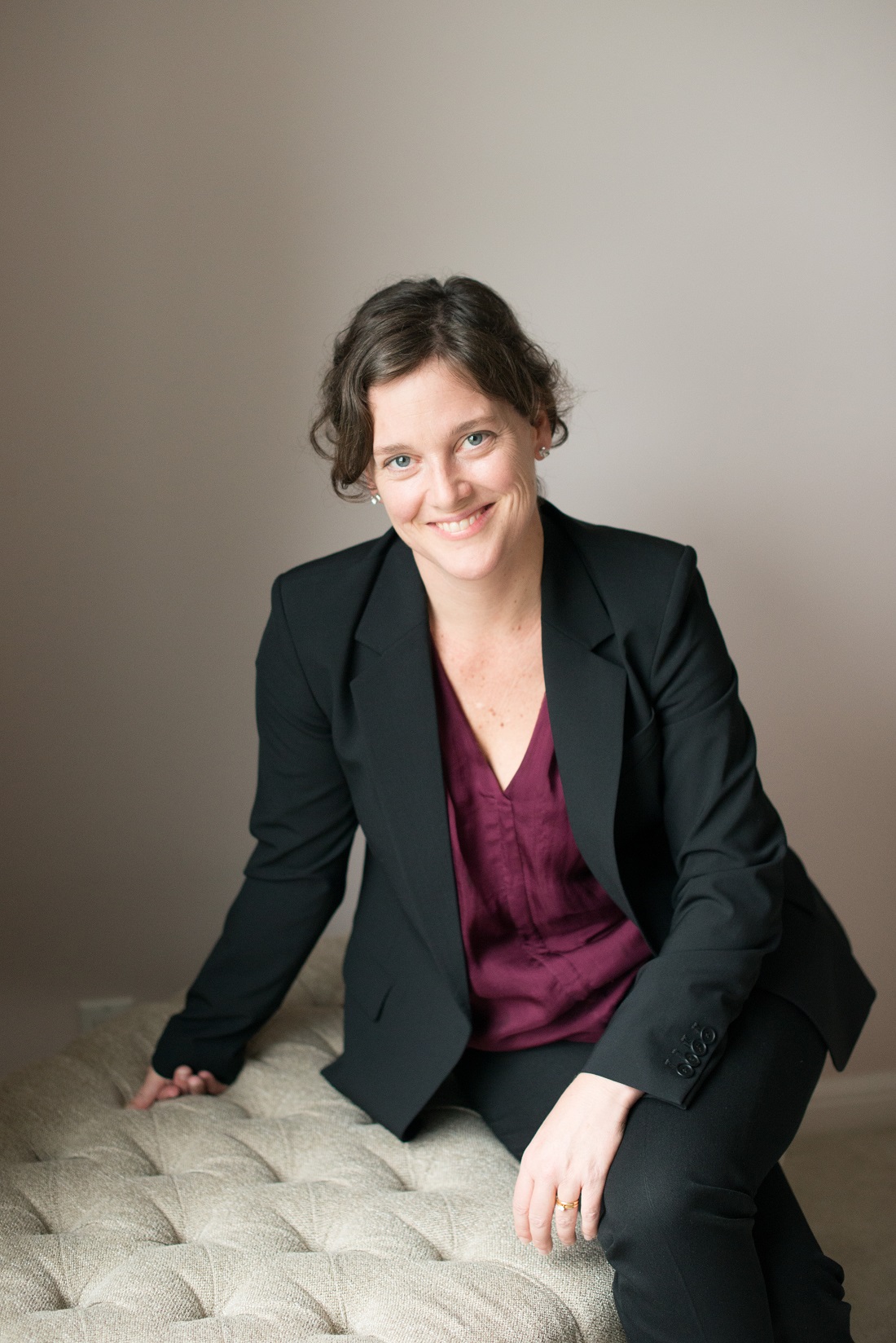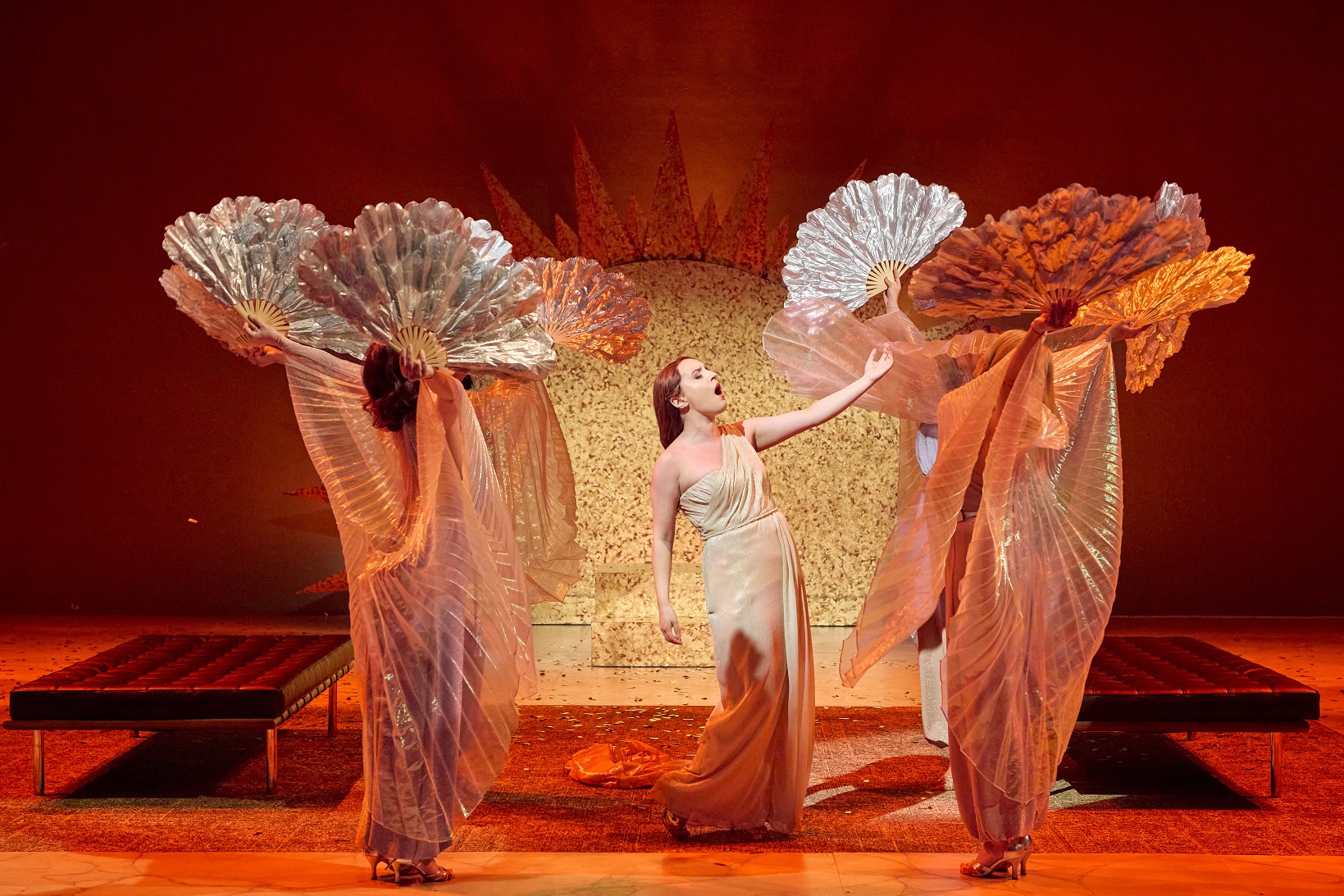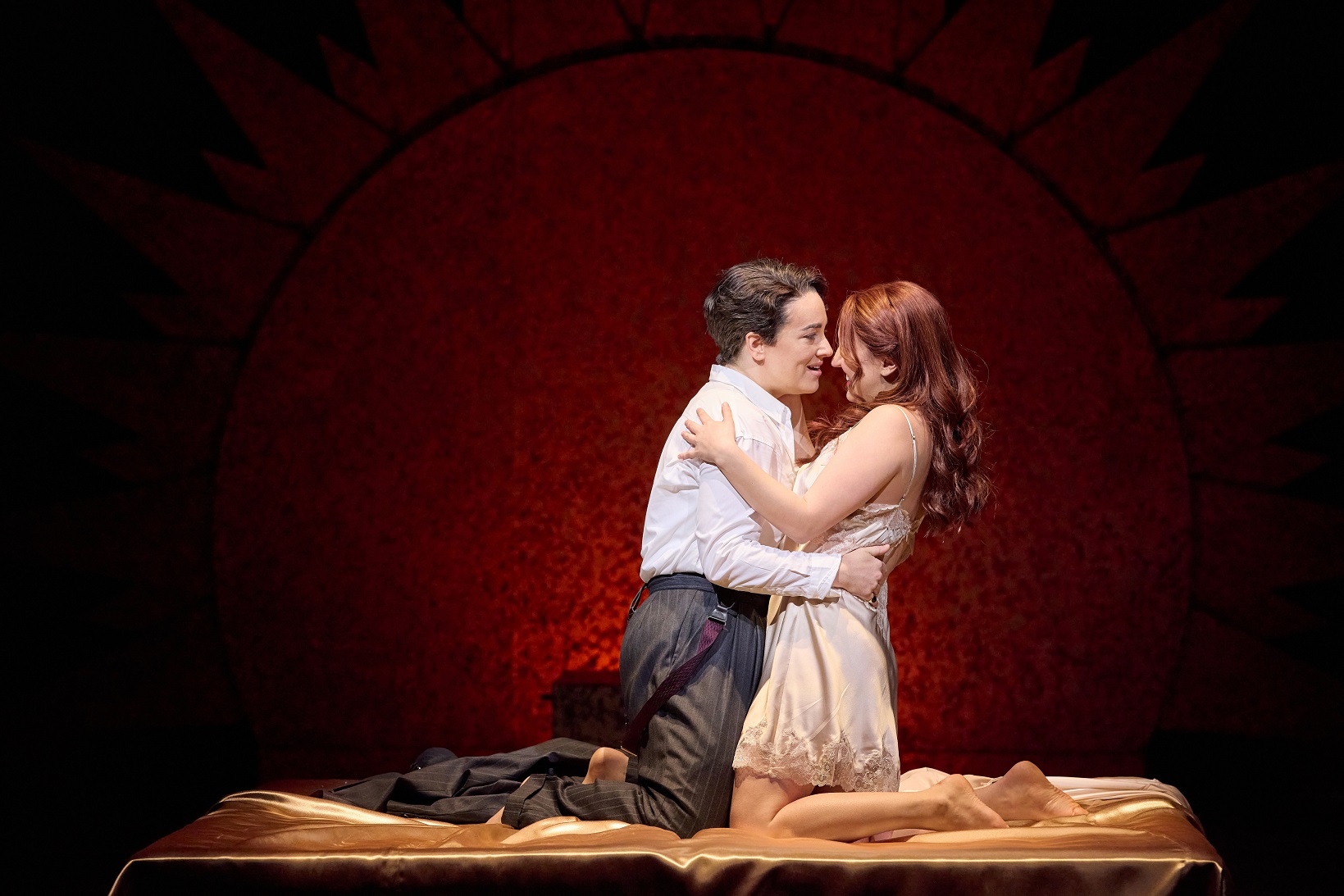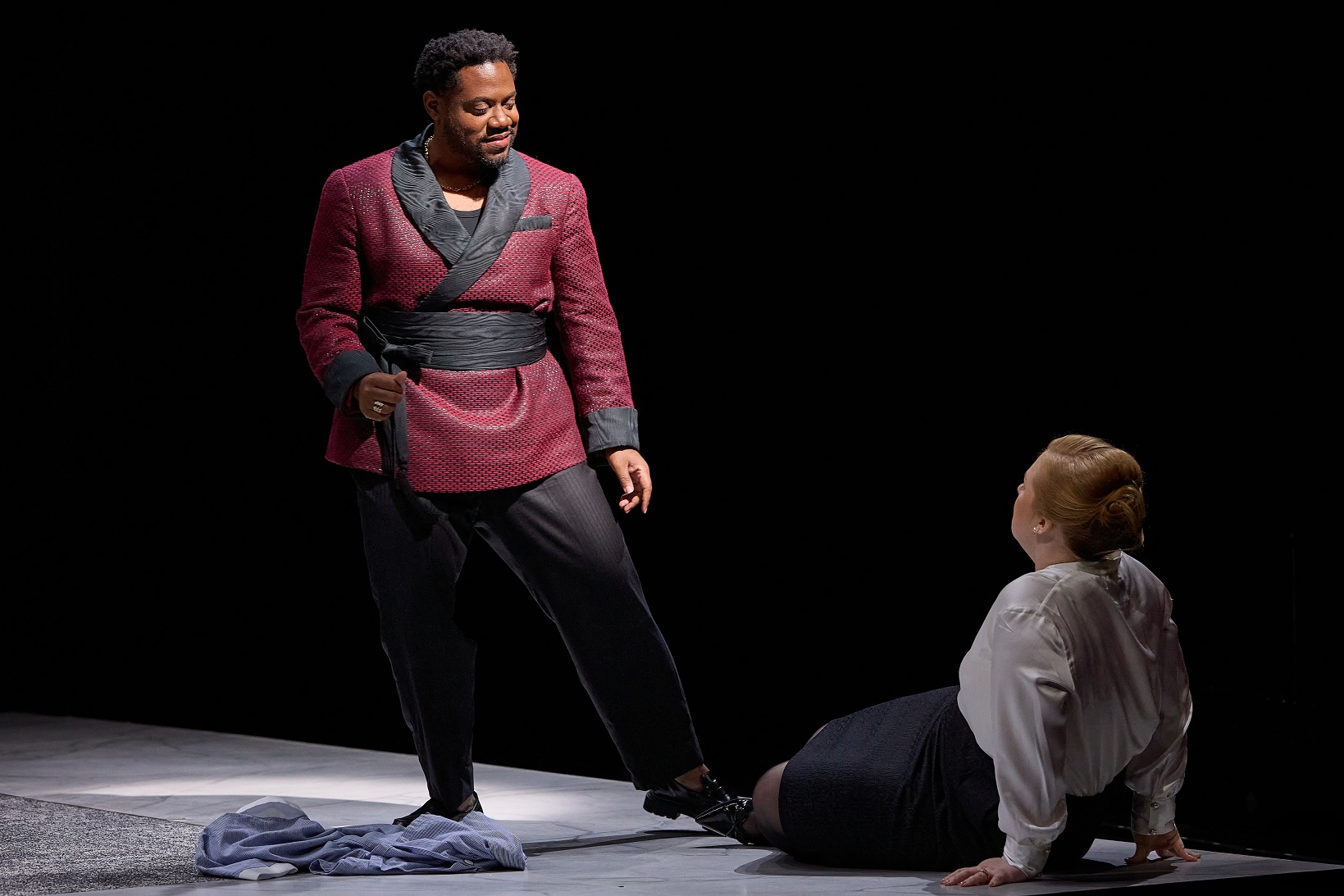
Opera Theatre of Saint Louis’ production of “Julius Caesar” signals a homecoming for director Elkhanah Pulitzer.
As a young girl, Pulitzer fell in love with opera and storytelling, which led her to intern at Opera Theatre while in college. She would go on to make her mark in the opera world in the years following, from the San Francisco Opera to the Los Angeles Philharmonic to the Boston Lyric Opera to the Washington National Opera.
Known for her visually impactful, compelling storytelling and innovative stage direction, Pulitzer’s work was seen most recently in John Adams’ “Antony and Cleopatra,” which premiered in San Francisco in 2022 and will make its debut at New York’s Metropolitan Opera next year.
Gazelle editor-in-chief Trish Muyco-Tobin spoke with the director prior to Opening Night at Opera Theatre of Handel’s “Julius Caesar,” a production that features the world premiere of Pulitzer’s staging.

GAZELLE: HOW DID YOU INITIALLY BECOME INVOLVED WITH OPERA THEATRE?
ELKHANAH PULITZER (EP): I interned as an assistant director during an early summer of my undergraduate years. I went to Cal Berkeley but had lived in St. Louis as a child, attending New City School from K to sixth grade and then moving to Northern California.
GAZELLE: WHAT APPEALED TO YOU ABOUT OPERA?
EP: Growing up, I loved seeing live performances of theatre, circus, music, etc. I went to a few operas at OTSL, which were formative as a younger person – two Gilbert and Sullivan productions – and it seemed to me that opera was a space that supported the confluence of all other art practices. At its best, all elements merge to create something higher than their parts, which leads to the magic of sharing time and space in community with fellow audiences on a journey of discovery and storytelling.
GAZELLE: WHAT ARE YOUR MEMORIES REGARDING “LA BELLE HÉLÈNE” AND OTHER PRODUCTIONS YOU WORKED AT OTSL. WHAT DID THAT TIME REVEAL TO YOU ABOUT OPERA AS A PROFESSION?
EP: I remember being charmed by “La belle Hélène” and the wit and playfulness of Michael Albano who directed that production. I went on to assist other notable directors, including JoAnna Akalaitis and Mark Lamos on productions of “Katya Kabanova” and “Merchant and the Pauper” (a premiere). The experience of seeing how they created the worlds of each work, used symbol and metaphor, interacted with cast members and developed the designs was crucial to my development as an artist. I see my job primarily as world-building that illuminates the work from within. My work is changeable because I aim to let the internal DNA of the story guide me, in collaboration with other artists.
GAZELLE: ONE OF YOUR EARLIER WORKS, “DREAM OF THE PACIFIC,” WHICH YOU WROTE AND DIRECTED, MADE ITS DEBUT AT OTSL 20 YEARS AGO. THE STORY CENTERED ON LEWIS AND CLARK. WHAT WERE SOME OF THE CHALLENGES FOR YOU AS LIBRETTIST OF RETELLING THAT TIME IN HISTORY?
EP: I look back with real fondness at “Dream of the Pacific.” Ultimately, it’s a huge story and to distill it down was challenging after reading so much source material including Lewis’ journals. It becomes clear in all that research that Lewis and Clark were deeply complementary in nature, filling in for one another in outlook, temperament, skills and ways of seeing the world.
I feel proud of the work we did and how much we celebrated the diverse corps who were instrumental in Lewis and Clark’s success. Most compelling to me was interweaving the story of Sacagawea, a young woman with a newborn child who was the only woman to make the trip and was crucial to their success in building positive alliances with native people throughout their journey. She is a hero of mine, still.
One of the challenges was to create the vast landscape of the journey and it was through the rehearsal process, working with young singers in the chorus, that we discovered their role as elemental nature – forces that worked to lift our characters and sometimes bring them to the brink of death. Finding that metaphor was a great discovery after trial and error.

GAZELLE: SPEAKING OF HISTORY, YOUR UPCOMING DIRECTORIAL DEBUT AT THE MET WITH “ANTONY AND CLEOPATRA” IN SOME WAYS HISTORICALLY INTERSECTS WITH OTSL’S CURRENT PRODUCTION OF “JULIUS CAESAR.” FROM A STORYTELLING PERSPECTIVE, IN WHAT WAYS ARE THEY SIMILAR OR DIFFERENT?
EP: Yes, I’ve been living with Rome and Alexandria for several years now, starting over five years ago with the early phases of looking at Shakespeare’s “Antony and Cleopatra” to developing a compressed version with Lucia Scheckner as dramaturg and John Adams as librettist composer. We have binders of JSTOR articles, a wide swath of books on my shelf dedicated to ancient Rome and Alexandria, etc. I chose to set that production in a Cecil B. DeMille-streamlined minimalist Hollywood, circa-1940s world that celebrates the fabrication of public self on the big screen as gods and goddesses.
For “Julius Caesar,” I wanted to take a strikingly different stance in approaching the work. The initial work on “Caesar” was deep-diving into the full piece with dramaturgical focus at cutting the work in collaboration with OTSL principal conductor Daniela Candillari.

I knew I wanted to center the love story inside of a taught political drama that offers danger, drift and fantasy. Handel celebrates such extremes of human capacities in his works and so the sense of drift I mean lies in how we can go from following a character in deep grief then shift to lightheartedness and then drift once more to profound contemplation of mortality, all in a few minutes’ time.
Fantasy was always a desired component of the work as there’s a “play within a play” when Cleopatra woos Caesar, so we knew we wanted something to transport them both. Out of these design conversations, a modern, sleek international office space emerged that feels contemporary with inflections of echoes of Chanel and Halston influences. After all, singers who perform these kinds of arias are doing rock-star turns replete with incredible cadenzas, so we knew we also wanted some high style to celebrate and support them as they change and grow through the course of the work.
GAZELLE: AS A DIRECTOR, IS THERE INTENTIONAL NUANCE IN THE WAY YOU PRESENT THE MAIN CHARACTERS IN “ANTONY AND CLEOPATRA” VERSUS “JULIUS CAESAR?”
EP: I think there are some basic principles that are the same in the sense that these characters need to feel human and real, fallible and faceted. Cleopatra is one of the most famous of few historical queens in over 2,000 years of history. She is an icon now, too, for many people so I wanted to lift her up and celebrate her and challenge the performers playing her to see how far they can go in revealing different aspects of her humanity. So, too, with Antony and Julius. Essential to each is the transformative impact of the love and power they create together. They are each unto a world powerful and unique, and in the union of love, their lives together co-create a new world that is no longer Alexandria or Rome but both combined – a message we all need to learn about building bridges of seeing the other as one’s own.
GAZELLE: HOW DOES IT FEEL TO BE BACK AT OTSL AFTER ALL THESE YEARS?
EP: It’s wonderful to be back! I feel very appreciative to come full circle on where my life in opera began and see how much I’ve grown and changed. The community of OTSL is rare and warm and it’s really incredible to get to work once more with people I knew over 20 years ago!
“Julius Caesar,” an opera in two acts, was first performed in London more than 300 years ago. Performances at Opera Theatre of Saint Louis run through June 28.





